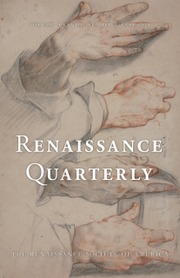The papers collected in this book originated in an international congress in Rome in 2019. They deal with Spanish connections to Roman antiquities. Most of the papers are well illustrated, including comparisons of Roman originals with later illustrations. The book is divided into two sections: one deals with ancient and Renaissance designs, while the other treats reception of classical models.
The first section contains nine papers, most focused on the sixteenth century. Fernando Marías discusses Francisco de Holandia, an artist who treated the antiquities he saw in Rome, and Don Rodrigo Díaz de Vivar y Mendoza, a member of a prominent Spanish family, who imported the Codex Escurialensis, with its drawings of classical sites. Sylvie Deswarte-Rosa connects a Portuguese artist who drew sketches of ancient buildings with Nicolau de Frias, who studied in the Roman circle of Pirro Ligorio. Maria Grazia Picozzi discusses the portraits of ancient Greeks found in the manuscripts of Alonso Chacón, connecting them to surviving busts. Beatrice Cacciotti connects images of ancient women now found in a manuscript at the Escorial. The author looks at the sources employed, including ancient coins. Maria Elisa Michelli looks at the sources employed in Enea Vico’s portraits of Roman empresses. Here too, coins are significant sources of illustrations. The portrait busts drawn by Jacopo Strada gave more attention to ancient busts than to coins. However, Strada felt free to combine heads and drapery from different images. Giulia Moretti Cursi ties Pirro Ligorio’s portrayals of the cardinal virtues with images of Roman empresses.
Although most of these papers treat drawn images, the last two papers in this chapter take up other sources. Raffaella Bucolo focuses on the printer Antonio Martínez, known as Antonius Salamanca. Salamanca resided in Rome, where he was an important publisher of engravings. A source of the images Salamanca printed was Enea Vico. Massimiliano Ghilardi discusses the Dominican friar Alonso Chacón, who gave his notes on the catacomb of Santa Priscilla to Antonio Bosio. Bosio would, in turn, treat the catacombs not just as ancient sites but also as sources of martyr relics exported to Counter Reformation Spain.
The second section contains eight more papers, often dealing with collections of classical objects. Paloma Martín and Esperanza Montilla treat the propaganda of Ferdinand and Isabella, which used the Roman past to justify not just the Reconquista but also the Spanish claim to Southern Italy. The Spanish ambassadors in Rome advanced such propaganda by collecting ancient artifacts in their palaces. Mariano Carbonell Buades discusses Antonio Agustín, a prelate known for his knowledge of law and his dialogue concerning ancient medals. The author supplements this paper with a list of ancient coins and medals owned by Agustín that were received by the Escorial. Markus Trunk deals with the collection of Per Afán de Ribera, first duke of Alcalà, who served as viceroy of Naples. Ribera collected ancient objects, mostly from Campania. The objects he gathered formed the core of the collection in the duke’s palace in Seville. José Beltrán Fortes and María Luisa Loza Azuaga argue that two statues of nymphs once held at the palace of Bornos in Cádiz, belonging to the first duke of Alcalà, were sixteenth-century Italian sculptures, not classical originals.
Cristina Muñoz-Delgado de Mata treats a different classical influence. Classical themes derived from Italy are reflected in the gardens, fountains, and follies installed by the third Duke of Alba at La Abadía. Moreover, these gardens reflect power and erudition, themes appropriate to a powerful nobleman like the duke. Montserrat Claveria shows that ancient sarcophagi were collected (whole or in part), studied, and imitated. One of the most interesting, found in Tarragona, shows the dead Christ atop a classical sarcophagus. Sara Garaventa links the tomb of Cardinal Pedro González de Mendoza in Toledo to Andrea Sansovino: this identification is supported not just by the style of the work but also by archival documents. José Riello reinterprets the works done by Alonso Berruguete done after his return to Spain in 1517, which had modern inspirations.
Most of these papers are focused on the sixteenth century, and they usually reflect Italian impacts on Spain. One notes that the names cited by the authors include not just those mentioned above, like Pirro Ligorio, but the humanist Fulvio Orsini, a correspondent of Antonio Agustín. Even those men who never left Italy had their impact on Spain.



